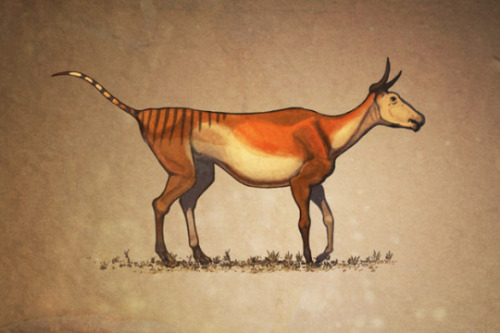Data Science for Dinosaurs: The Blind Spots of Paleontology
Posted on Sat 24 April 2021 in misc
Data rarely tells the whole story. The Data Scientist’s job is to imagine what we might not know, not just infer from the data we happen to have. Paleontologists and paleoartists must imagine the fur, fat, and feathers that might have accompanied dinosaur fossils. Data Scientists should do the same and imagine everything that might have surrounded any data artifacts. At minimum, this requires creativity and humility in the face of great unknowns.
All illustrations and quotes are from the excellent book “All Yesterdays: Unique and Speculative Views of Dinosaurs and Other Prehistoric Animals” by Conway, Koseman, and Naish.
Much of what we think we know about what dinosaurs looked like is wrong. Paleontologists and paleoartists have made their best educated guesses based on bones and fossils, but without the fur, fat, feathers, or behavior they are missing a lot. Perhaps Triceratops was spiky, T. Rex liked to nap on its side, or Therizinosaurus (with its 70 cm claws!) really looked like an ominous mountain of feathers. The point is, while we know a lot, we don’t know everything and bridging that gap requires creativity and humility.

This is a lot like the art of Data Science. Only some things are logged, retention may be short, few things might be pre-computed. Each data point, graph, chart, or table is a fossil of behavior - valuable yet limited. We do our best to reconstruct, from limited evidence, complex stories. These stories are powerful and evocative, but they are inherently flawed by their incomplete sources. As Data Scientists, it’s our job to bridge that gap with creativity and humility. We must try to imagine the fat, fur, and feathers. We can work around these blind spots, but we must remember their existence.
Viewing Today’s Animals from the Future
If you’re not yet convinced, imagine today’s animals as future scientists might see them by their fossils. Each conclusion we draw from data might be this wrong (or right!). All images and quotes from All Yesterdays.

“The killer stare of the Cat, a vicious pack-dwelling hunter. This dangerous predator brandished a set of not one, but FIVE switchblade claws on each forefoot. Its fossils are usually found in the concrete nests of long-limbed bipedal Humans, suggesting that the killer Cats wandered into their lairs before slaughtering their hapless victims.”

“The Cow was a lithe, graceful herbivore that, despite its size, could easily outrun pursuing hunters.”

“Two Swans are seen with their long, scythe-like forelimbs, which they must have used to spear small prey items. One of them has just caught a Tadpole, one of the mysterious fish of the past.”

“A solitary Manatee is shown grazing in its mountain home. We only know the skill of this enigmatic herbivore.”

“Unlike many others, this reconstruction of the Iguana is fully up-to-date. Impressions of a furry integument have been discovered around the skeletons of Rats a few years ago. It is likely that all small vertebrates had such body covering against the cold.”
Sources:
- “All Yesterdays: Unique and Speculative Views of Dinosaurs and Other Prehistoric Animals” by Conway, Koseman, and Naish.
- More discussion of the perils of paleoart at Atlas Obscura.
- Angela Bassa, data leader at iRobot, has made great points about this on Twitter.